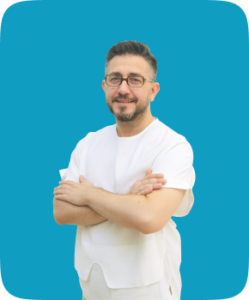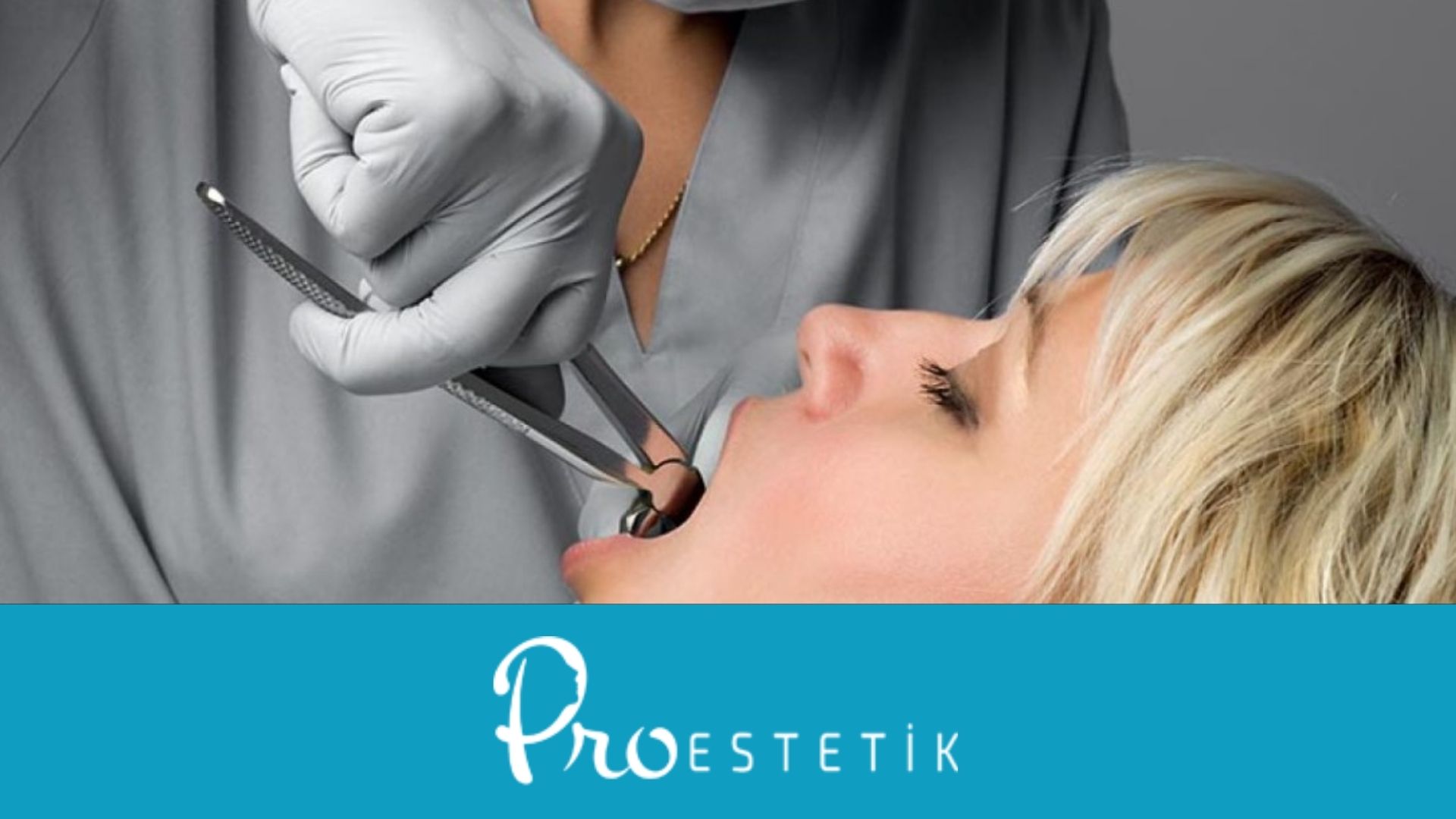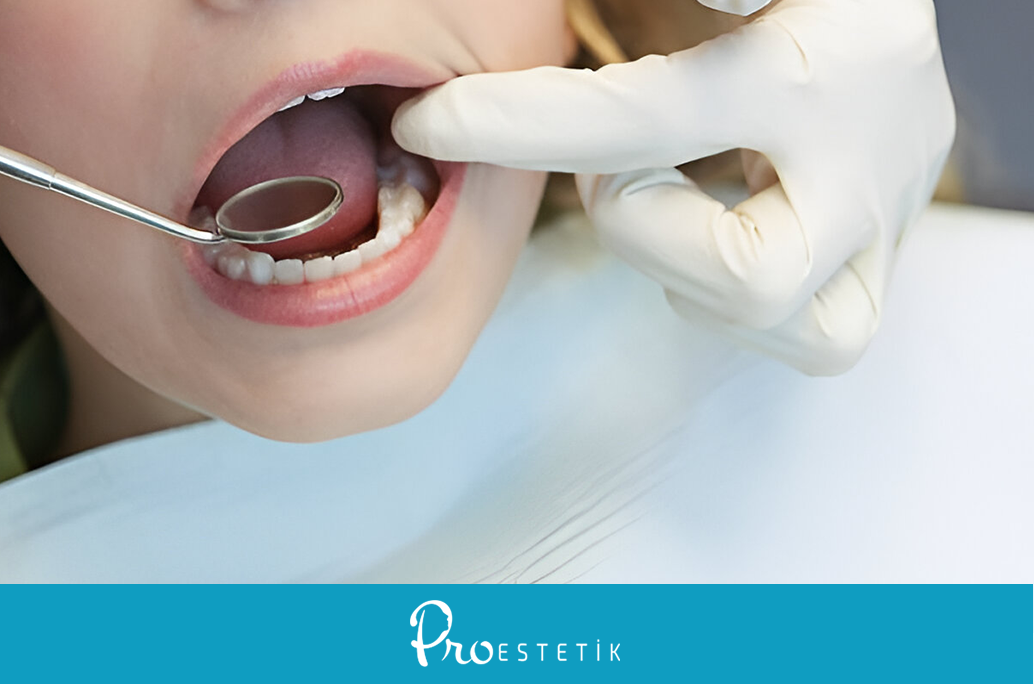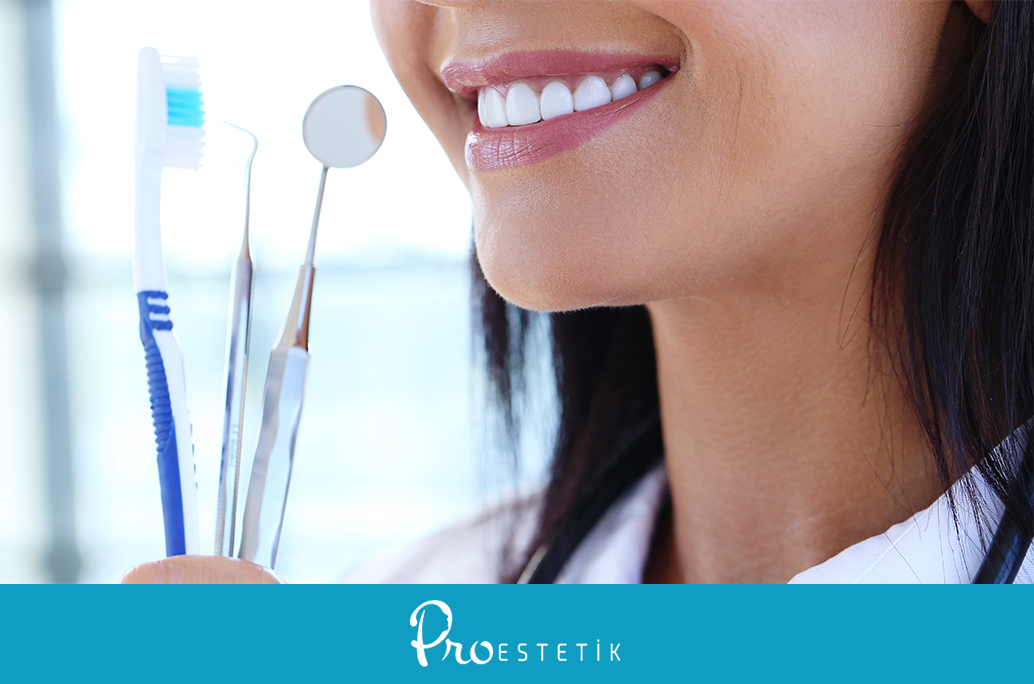Jaw retraction treatment is applied to individuals with an imbalance in teeth, jaw, and facial structure, often caused by the lower jaw being less developed compared to the upper jaw. This condition can be addressed through orthodontic or surgical interventions.
Jaw retraction typically occurs over time, especially during developmental stages. There are various symptoms associated with lower jaw retrusion. Understanding these symptoms and initiating treatment early can help shorten the duration of the treatment. Let's explore the treatment of jaw retraction and the 5 prominent symptoms of this issue.
5 Key Symptoms of Jaw Retraction:

- Mouth Breathing Instead of Nose Breathing: Individuals with jaw retrusion often breathe through their mouths, leading to gum problems.
- Chewing, Swallowing, and Speech Disorders: Difficulties in chewing, swallowing, and various speech disorders may be present.
- Pain in the Jaw and Jaw Joints: Ache in the jaw and jaw joints is a common symptom of jaw retrusion.
- Dental Misalignment Due to Contact of Front Teeth in the Gums: Discrepancies in the alignment of the front teeth due to contact with the gums.
- Abnormal Jaw Structure When Viewed from the Side: The jaw structure appears abnormal when viewed from the side.
Jaw retrusion can result from genetic factors or certain traumas, along with developmental issues. Causes of jaw retrusion include medication use during pregnancy, thumb-sucking habits, facial traumas, narrow upper jaw, abnormal muscle function, among others.
Causes of Jaw Retraction:
- Medications used during pregnancy.
- Thumb-sucking habits.
- Facial traumas.
- Narrow upper jaw.
- Abnormal muscle function.
As seen above, jaw retrusion can have various causes, affecting human health in different ways. After discussing the causes and consequences of jaw retrusion, let's now delve into the treatment of lower jaw retrusion, examining how it is done.
How is Jaw Retraction Treated?

Before answering the question of how jaw retrusion is treated, let's explore how it is diagnosed. Initially, a doctor can visually detect jaw retrusion through a detailed examination of the patient's oral and facial features. Additionally, measurements are taken by studying the closure of the mouth. These examinations are crucial for planning the treatment of jaw retrusion.
Once the diagnosis is made and examinations are conducted, a treatment plan is established. The treatment of jaw retrusion is divided into orthodontic and orthognathic approaches. These treatments include:
1- Orthodontic Treatment:
Using movable and fixed appliances to maintain the correct positioning of the teeth, addressing issues such as bite and misalignment. This is particularly preferred for young children, as skeletal development continues during childhood.
2- Orthognathic Surgery:
Surgical procedures to correct improper jaw closure situations. This method is typically chosen for adults and older children. The surgery is performed by orthognathic, plastic, or oral and maxillofacial surgeons. Although surgery is often preferred for adults with this problem, fixed appliances designed for adults are also available in some cases. Additionally, the issue can be addressed using braces.
If you are curious about the age at which jaw retrusion treatment is administered, it can be applied to individuals of all age groups. However, different treatment methods may be recommended for different age groups. Jaw retrusion is often identified in childhood, and early intervention with appliances can guide jaw development more easily due to ongoing skeletal growth.
In adults, surgical intervention may be necessary when encountering this problem. Additionally, braces can be used for both adults and children to correct jaw retrusion. The specific treatment approach depends on the individual's health issues and the response to treatment.
What Happens If Jaw Retraction Is Not Treated?

In a normally developing individual, teeth, jaw, and face exhibit harmony. Disruption of this harmony, as seen in jaw retrusion, can lead to various health problems. Jaw retrusion is both an aesthetic and functional concern for the individual.
There are several reasons for the occurrence of jaw retrusion, including genetic factors, maternal medication use during pregnancy, and jaw constriction. Treatment options include jaw retrusion surgery, braces, and various appliances. If left untreated, the following issues may arise:
- Deterioration of the Problem: If jaw retrusion is not treated, the problem tends to worsen over time, causing increased aesthetic discomfort.
- Impaired Chewing Functions: Day by day, chewing functions become compromised.
- Speech Difficulties: Difficulties in speech may occur.
Delaying treatment can lead to these and other problems. Neglected dental issues can escalate into more significant problems. Therefore, if you have any concerns, you can visit our clinic for a free examination. You can also contact us for detailed information about our services.
If you have further questions or if you'd like more information about our orthodontic treatments, including the Invisalign (transparent aligners) treatment option, you can visit our page.
Feel free to ask us any questions or take advantage of our free examination service at our clinic.

 English
English Turkish
Turkish Deutsch
Deutsch العربية
العربية![[:en]Jaw Retraction Treatment: 5 Key Symptoms[:tr]Alt Çene Geriliği Tedavisi: 5 Belirti Bunları İhmal Etmeyin![:de]Kiefer-Retraktionsbehandlung: 5 Wichtige Symptome[:ar]علاج تراجع الفك: 5 أعراض رئيسية[:] alt çene geriliği tedavisi](https://proestetik.com.tr/wp-content/uploads/2023/11/alt-cene-geriligi-tedavisi.png)











Yasemin
6 months agoBen birbuçuk aydır dişteli takıyorum, çok ağrılarım var, sonra ameliyat edeceğini söyledi doktor, çok korkuyorum